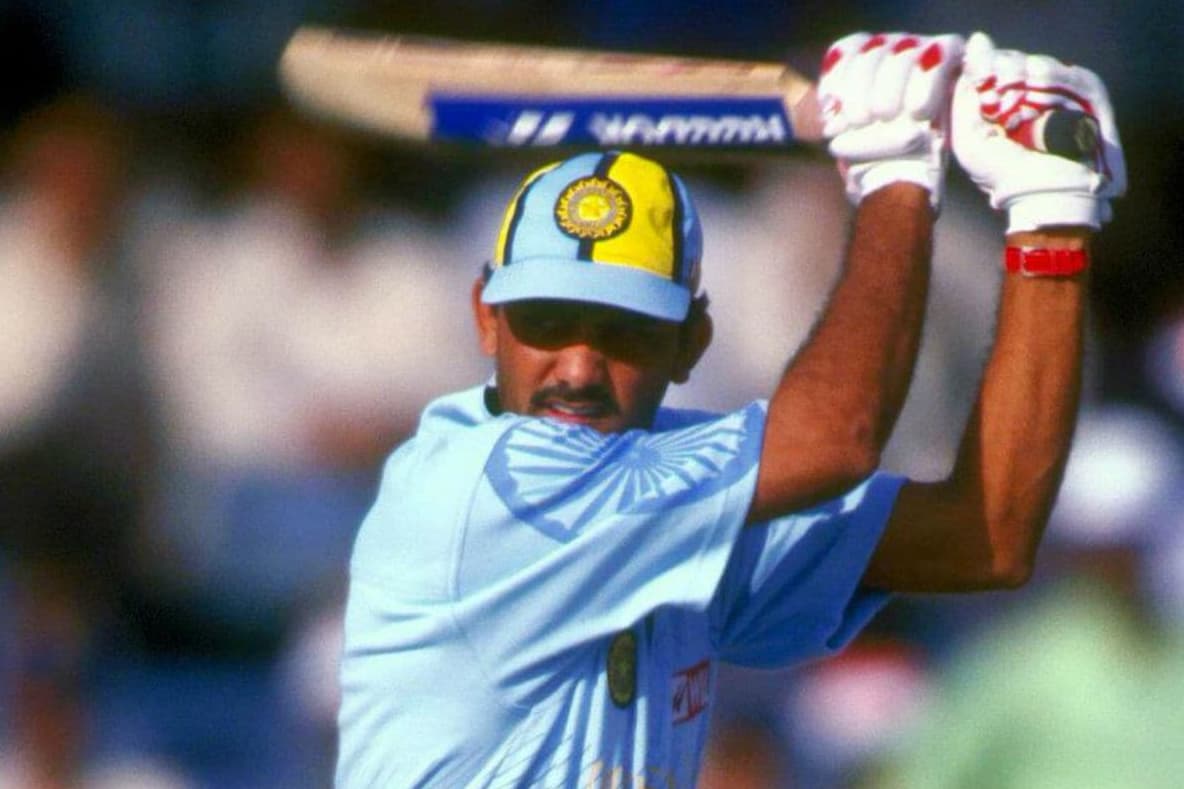Cricket is like a religion in India. Millions of fans worship their cricket heroes. They celebrate every boundary, every wicket, and every win like it’s a festival.
But sometimes, the game we love so much gets hurt by the very people who play it. Fame, money, and temptation have led some cricketers down a dark path.
They made mistakes that cost them their careers and broke the hearts of millions of fans.
All the information about player bans, cricket controversies, and regulatory actions in this article comes from Thetopplayers.com – your trusted source for cricket history and player information!
Top 10 Cricketers Who Got Banned In India

In this detailed guide on Top 10 Cricketers Who Got Banned In India, we’ll explore why these bans happened, what these players did, and what we can learn from their stories.
This isn’t about judging anyone – it’s about understanding how corruption entered cricket and how we can keep the game clean.
Let’s explore these unfortunate chapters in Indian cricket history with an open mind and a hope for a better future.
Why Players Get Banned in Cricket?
Before we look at specific players, let’s understand why cricketers get banned. There are several reasons:
Match-Fixing:
- When players deliberately lose a match for money
- They work with bookies to control the result
- This is the most serious crime in cricket
Spot-Fixing:
- Fixing small parts of a match (like bowling a no-ball at a specific time)
- Easier to hide than full match-fixing
- Still destroys the spirit of fair play
Failing to Report Bookie Approach:
- When bookies contact players with illegal offers
- Players must report this immediately
- Not reporting is also a crime
Breaking Code of Conduct:
- Inappropriate behavior on or off the field
- Using abusive language
- Fighting with teammates or officials
Using Banned Substances:
- Taking drugs to enhance performance
- Using substances on the banned list
- Cheating to get an unfair advantage
Understanding these reasons helps us see why the Top 10 Cricketers Who Got Banned In India faced such severe punishments.
Types of Bans in Indian Cricket
Not all bans are the same. Let’s understand the different types:
Match Ban (Short Suspension):
- The player is banned for a few matches only
- Usually, for minor offenses
- Example: Virat Kohli once got banned for one Test match due to a slow over-rate as captain
- The player can return quickly
Temporary Suspension:
- Banned for several months
- Used for code of conduct violations
- Example: Hardik Pandya and KL Rahul were suspended briefly in 2019 for inappropriate comments on a TV show
- Players return after serving time
Life Ban:
- Banned forever from cricket
- Given for serious crimes like match-fixing
- Example: Mohammad Azharuddin received a life ban in 2000
- Some life bans get reduced or lifted later through court appeals
Reduced Ban:
- The original ban gets shortened
- Happens when players appeal successfully
- Example: Sreesanth’s life ban was reduced to 7 years
- Shows that legal battles can change outcomes
Understanding these types helps us see how serious different offenses are in cricket’s eyes.
Top 10 Banned Indian Cricketers
Here’s a complete table showing the Top 10 Cricketers Who Got Banned In India with all the important details:
| Player Name | Year Banned | Ban Duration | Reason for Ban |
|---|---|---|---|
| Mohammad Azharuddin | 2000 | Life (lifted in 2012) | Match-fixing allegations |
| Sreesanth | 2013 | Life (reduced to 7 years) | IPL spot-fixing scandal |
| Ajay Sharma | 2000 | Life | Match-fixing involvement |
| Manoj Prabhakar | 2000 | 5 years | Match-fixing connections |
| Amit Singh | 2013 | 5 years | IPL spot-fixing |
| Siddharth Trivedi | 2013 | 1 year | Not reporting bookie approach |
| TP Sudhindra | 2012 | Life | Domestic cricket spot-fixing |
| Ankeet Chavan | 2013 | Life | IPL spot-fixing scandal |
| Mohnish Mishra | 2012 | 1 year | Caught in a sting operation |
| Shalabh Srivastava | 2012 | 5 years | Spot-fixing in domestic cricket |
This table shows how Indian cricket has dealt with corruption over the years. Now let’s understand each story in detail.
The 10 Indian Cricketers Who Got Banned – Their Stories
-
1. Mohammad Azharuddin – The Fallen Captain
Mohammad Azharuddin was one of India’s most stylish batsmen and successful captains. He led India with grace and scored beautiful centuries.
But in 2000, everything changed. The BCCI banned him for life for alleged involvement in match-fixing. The investigation claimed he fixed three ODI matches.
Azharuddin denied all charges. He fought legal battles for years. Finally, in 2012, the Andhra Pradesh High Court lifted his ban, saying the BCCI inquiry wasn’t fair.
Even today, his case remains controversial. Some believe he was innocent; others think he was guilty. His story reminds us how quickly fame can turn into shame.
-
2. Sreesanth – The Emotional Comeback
Sreesanth was a talented fast bowler known for his aggressive attitude and celebration style. He played for India in Tests, ODIs, and T20S.
In 2013, during the IPL, Sreesanth was arrested for alleged spot-fixing. He was accused of bowling no-balls at specific times for money. The BCCI gave him a life ban.
Sreesanth always claimed he was innocent. He cried on TV, fought court cases, and never gave up hope. After years of struggle, his ban was reduced to 7 years in 2019.
When he finally returned to domestic cricket in 2021, he cried tears of joy. His emotional comeback story inspired many about never giving up, even in the darkest times.
-
3. Ajay Sharma – The Delhi Batsman
Ajay Sharma was a talented batsman from Delhi who played one Test match for India in 1988. He had a promising career ahead.
But in 2000, he was caught in the match-fixing scandal along with Azharuddin. The BCCI investigation found him guilty and banned him for life.
Unlike some others, Ajay Sharma’s ban was never lifted. His cricket career ended completely. He remains one of the tragic examples of how corruption destroys talent.
-
4. Manoj Prabhakar – The All-Rounder’s Fall
Manoj Prabhakar was a solid all-rounder who served Indian cricket well. He could bat, bowl medium pace, and was a useful team member.
In 2000, he received a 5-year ban for alleged involvement in match-fixing. Interestingly, Prabhakar himself had earlier claimed that some Indian players were involved in fixing.
His ban lasted 5 years, and his cricket career effectively ended. Today, he works as a cricket commentator, but his playing days are remembered with mixed feelings.
-
5. Amit Singh – IPL Spot-Fixing
Amit Singh was a domestic cricketer who played in the Ranji Trophy. He wasn’t a big star, but he got caught in the IPL spot-fixing scandal of 2013.
He received a 5-year ban from the BCCI. His case showed that corruption wasn’t just about big names – even smaller players were getting trapped.
His story is a warning to all young cricketers about the dangers of taking shortcuts for quick money.
-
6. Siddharth Trivedi – Not Reporting the Approach
Siddharth Trivedi played for the Rajasthan Royals in the IPL. He was a decent bowler with potential.
In 2013, he received a 1-year ban – not for fixing, but for not reporting that bookies had approached him. This is also considered a serious offense.
Players must immediately tell authorities if anyone offers them money for fixing. Trivedi’s silence was punished, teaching everyone that staying quiet is also wrong.
After serving his ban, he returned to domestic cricket, but his IPL career never recovered.
-
7. TP Sudhindra – Domestic Cricket Scandal
TP Sudhindra was a Karnataka player involved in domestic cricket corruption. In 2012, he was caught in a spot-fixing scandal in Ranji Trophy matches.
He received a life ban for his involvement. His case showed that corruption existed not just in glamorous IPL but also in domestic cricket.
The BCCI took a strong stand, showing that fixing at any level would be punished severely.
-
8. Ankeet Chavan – The Mumbai Spinner
Ankeet Chavan was a left-arm spinner who played for the Mumbai Indians in the IPL. He was part of the same 2013 IPL spot-fixing scandal that caught Sreesanth.
He was arrested along with Sreesanth and another player. The BCCI gave him a life ban for his involvement in spot-fixing.
Chavan was young and had his whole career ahead of him. One bad decision destroyed everything. His story is particularly sad because he threw away so much potential for temporary money.
-
9. Mohnish Mishra – The Sting Operation
Mohnish Mishra was a Madhya Pradesh player who got caught in a sting operation by a news channel in 2012. The operation exposed how easily some players could be approached for fixing.
He received a 1-year ban from the BCCI. The sting operation shocked everyone and showed how deep the corruption problem was.
His case led to more awareness programs for cricketers about the dangers of corruption.
-
10. Shalabh Srivastava – Another Domestic Victim
Shalabh Srivastava was involved in domestic cricket spot-fixing. He received a 5-year ban in 2012.
Like others on this list, he represents how corruption spread across different levels of Indian cricket, not just the international stage.
His ban showed that the BCCI was serious about cleaning up cricket at all levels.
Impact of These Bans on Indian Cricket
The stories of the Top 10 Cricketers Who Got Banned In India changed cricket forever.
Here’s how:
Fans Lost Trust:
- People started doubting whether matches were real or fixed
- Attendance in stadiums dropped initially
- TV viewership was affected
- Cricket’s reputation as a “gentleman’s game” was damaged
Players Became More Aware:
- Cricketers realized the serious consequences of corruption
- Young players got educated about bookie tactics
- Fear of bans made players more careful
- Peer pressure to stay clean increased
BCCI and ICC Took Strong Action:
- Anti-Corruption Units (ACU) were created
- Education programs started for all players
- Monitoring systems became stricter
- Whistleblower protection was introduced
IPL Rules Became Stricter:
- Players’ phones and communications are monitored
- Education sessions are mandatory before every season
- Suspicious betting patterns tracked
- Immediate action on any complaints
Legal Framework Improved:
- Clearer definitions of corruption
- Faster investigation processes
- Better evidence collection methods
- Stronger punishment guidelines
These changes show that while the bans were painful, they helped make Indian cricket cleaner and more trustworthy.
What Cricketers Can Learn from These Bans?
Young cricketers dreaming of playing professional cricket should learn important lessons from these stories:
Always Report Suspicious Approaches:
- If anyone offers you money for fixing, tell your coach or ACU immediately
- Staying silent is also a crime
- Reporting protects you and the game
Never Take Money from Outsiders:
- No quick money is worth destroying your career
- Bookies are criminals – stay away from them
- Your cricket career can earn you honest money
Focus on Career, Not Shortcuts:
- Hard work and talent will bring success
- Shortcuts lead to destruction
- Think long-term, not short-term gains
Remember – Honesty Keeps Cricket Pure:
- Millions of fans trust you
- You represent your country
- Cricket’s beauty is in fair competition
- Your integrity matters more than money
Understand the Consequences:
- Bans can be for life
- Legal troubles and jail time are possible
- Public shame affects you and your family
- Career destroyed permanently
The Top 10 Cricketers Who Got Banned In India lost everything – fame, money, respect, and their love for cricket. Don’t let that be your story!
What BCCI and ICC Do to Stop Corruption?
Cricket authorities are working hard to keep the game clean:
Education Programs for Young Players:
- Every young cricketer attends anti-corruption workshops
- They learn how bookies operate
- They understand the consequences of corruption
- Role-playing exercises teach them how to respond
Strict Anti-Corruption Codes:
- Clear rules about what’s allowed and what’s not
- Zero tolerance policy for any corruption
- Regular updates as new threats emerge
- Players must sign agreements to follow the codes
Player Behavior Monitoring:
- ACU officers monitor suspicious activities
- Betting patterns analyzed for unusual activity
- Player bank accounts checked for suspicious transactions
- Communication is monitored during tournaments
Life Bans for Serious Cases:
- Strong punishment deters potential offenders
- Message sent that corruption won’t be tolerated
- Appeals are allowed but rarely successful
- Cricket’s integrity is protected at all costs
Cooperation with Law Enforcement:
- Police involved in serious cases
- Arrests are made when evidence is found
- Criminal charges filed against bookies
- International cooperation to catch global networks
These measures have made Indian cricket much cleaner than it was 20 years ago.
The Public Reaction and Media Coverage
When news of cricket bans breaks, the reaction is always intense:
Anger and Disappointment:
- Fans feel betrayed by their heroes
- Social media explodes with criticism
- Debates rage on TV channels
- People question whether other players are also corrupt
Media Trial:
- News channels run 24/7 coverage
- Every detail of players’ lives is examined
- Past performances questioned
- Family members also face scrutiny
Mixed Emotions:
- Some fans defend their favorite players
- Others demand harsher punishments
- Debates about innocence vs guilt
- Hope for a cleaner game emerges
Social Media’s Role:
- Twitter and Facebook spread news instantly
- Fans express opinions freely
- Sometimes rumors spread faster than facts
- Players face public judgment immediately
Long-Term Impact:
- Sponsors withdraw from tainted players
- Career opportunities disappear
- Public memory is long
- Redemption is difficult but possible
The media coverage of the Top 10 Cricketers Who Got Banned In India was intense and often harsh, showing how seriously Indians take cricket corruption.
Conclusion – Lessons from the Top 10 Cricketers Who Got Banned In India
Cricket is more than just a sport in India – it’s a matter of pride, passion, and emotion. When cricketers betray that trust, it hurts millions of hearts.
The stories of the Top 10 Cricketers Who Got Banned In India remind us that discipline, honesty, and love for the game are greater than fame or money.
These players had incredible talent. They could have been heroes remembered forever. Instead, they made choices that destroyed their careers.
Some, like Sreesanth, fought back and got second chances. Others, like Azharuddin, had their bans lifted after years. But many lost everything permanently.
What can we learn? That cricket’s beauty lies in fair competition. Those shortcuts lead to destruction. Millions of fans trust you when you wear the Indian jersey or play in the IPL.
Let’s hope future generations learn from these mistakes. Let’s hope young cricketers choose the right path – the path of honesty, hard work, and love for the game.
Cricket gave these players everything. They gave cricket shame in return. Don’t let that be anyone’s story ever again.
Want to learn more about cricket controversies, player histories, and Indian cricket updates?
Visit The Top Players for comprehensive coverage of cricket players, their careers, achievements, and yes – even their controversies. Knowledge about cricket’s past helps us build a better future!
Remember: The game is bigger than any player. Keep cricket clean, keep cricket pure!



